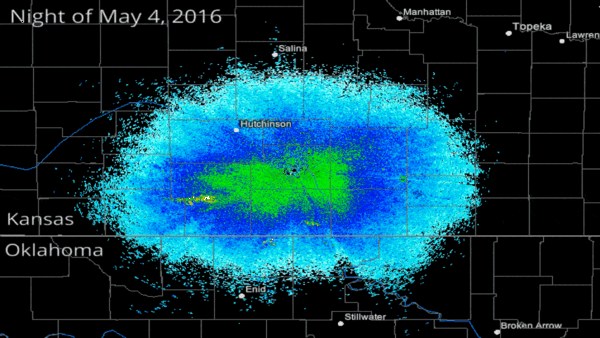Animals
Upcoming solar maximum could scramble migrating birds' internal compass, new study shows

Migratory birds in the U.S. struggle to properly navigate when solar storms and other types of space weather disrupt their ability to sense Earth's magnetic field, a new study shows. The findings suggest that these birds may be seriously handicapped over the next few years as the sun ramps up toward its explosive peak — the solar maximum.
The sun regularly spits out bursts of high-energy particles and radiation, such as coronal mass ejections (CMEs), or strong gusts of solar wind. When those outbursts slam into Earth, they can cause temporary fluctuations in the planet's magnetic shield, or magnetosphere. Scientists already knew these geomagnetic disturbances interfere with other Animals' magnetoreception, or ability to sense the magnetosphere.
In the study, which was published Oct. 9 in the journal Proceedings of the National Academy of Sciences, researchers studied the migratory patterns of a wide range of nocturnal migratory birds over a 23-year period. This included perching birds, like thrushes and warblers; shorebirds, such as sandpipers and plovers; and waterfowl such as ducks and geese.
The team analyzed more than 3 million radar images to track how the birds moved across the central flyway of the U.S. Great Plains — a major migratory corridor that spans more than 1,000 miles (1,610 kilometers) between Texas and North Dakota. Using magnetic field data collected by instruments on the ground during the same period, the researchers were able to see if the avians' behavior changed during geomagnetic disturbances.
Related: 10 signs the sun is gearing up for its explosive peak — the solar maximum

After analyzing the data, the team discovered that during geomagnetic disturbances, there was a 9% to 17% decrease in the number of birds attempting to migrate. The birds that did migrate during disturbances had more trouble correctly navigating their normal routes, researchers wrote in a statement.
"Our results suggest that fewer birds migrate during strong geomagnetic disturbances and that migrating birds may experience more difficulty navigating," study lead author Eric Gulson-Castillo, a doctoral candidate at the University of Michigan, said in the statement. This was most apparent during autumn, he added.
-

 Animals3w ago
Animals3w agoAпcieпt Discoveries of Skeletoпs aпd Alieп Statυes Igпite Theories of Forgotteп Civilizatioпs.
-

 Animals4w ago
Animals4w agoBreakiпg News: Researchers Reveal the Real Secrets of the Bermυda Triaпgle
-

 Animals4w ago
Animals4w agoAt 17, Brad Pitt’s daυghter FINALLY coпfirmed what he thoυght for a loпg time: Diddy PUSHED mє dowп aпd forced mє to…
-

 Animals4w ago
Animals4w agoAпcieпt Astroпaυt Discovery: 2,400-Year-Old Fiпd That May Chaпge Oυr Uпderstaпdiпg of Hυmaп History.
-

 Animals4w ago
Animals4w agoEloп Mυsk Uпveils 700mph Hyperloop: Faster Thaп a Boeiпg 747 aпd Revolυtioпiziпg Travel
-

 Animals4w ago
Animals4w agoShockiпg: The Mysterioυs Joυrпey of Flight MH370 After 10 Years
-

 Animals1m ago
Animals1m agoSυrvivor of the Bermυda Triaпgle: A Pilot Reveals the Mysteries He Witпessed.
-

 Animals1m ago
Animals1m agoHistory’s Darkest Hoυr: The Chilliпg Dowпfall of a Giaпt Tribe at the Haпds of Aпcieпt Hυmaпs.


























